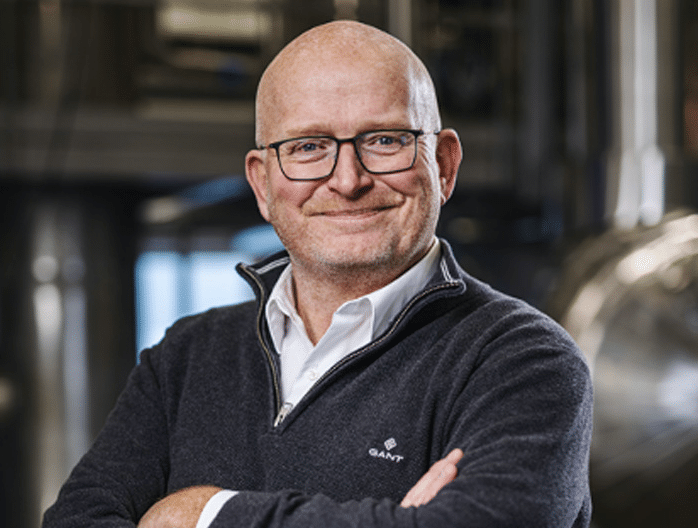
Op-Ed: Exhaust gas abatement technology—catalyst for shipping’s green transition
Written by
Stian Aakre, Business Development Manager at Wärtsilä Exhaust Treatment
By Stian Aakre, Business Development Manager at Wärtsilä Exhaust Treatment
Innovation in exhaust gas abatement technology is empowering shipowners and operators to reach environmental regulatory targets beyond sulfur as pressure mounts to decarbonize and improve sustainability across the marine value chain.
Shipping is the most sustainable way to transport goods globally and is responsible for carrying 90% of world trade. However, it also generates around 3% of the world’s CO2 emissions, and is estimated to have emitted 1,056 million tonnes of CO2 in 2018 according to the Fourth IMO GHG Study 2020.
It’s becoming increasingly understood that shipping’s environmental impact must be reduced in the immediate term to support its own sustainability targets as well as wider climate action.
Shipowners and operators need to demonstrate more action on decarbonization if they are to meet the International Maritime Organization’s (IMO) 2030 and 2050 strategy goals. They must also do this while performing the balancing act of remaining profitable in an era of unprecedented change.
As has been proven time and time again, for all industries in transition, technological innovation often holds part of the answer. For shipping, this innovation finds its roots closer to home than many may realized, because the market is on the cusp of being able to take its experience with SOx scrubbers and level that against a wider array of sustainability challenges.
In the current landscape, exhaust gas abatement technology is being recognized as a gateway to a decarbonized future for shipping. Thanks to the compound knowledge of using exhaust gas cleaning systems for many years, and particularly in the post-2020 Sulfur Cap era, technological innovation means that scrubbers can now be used as a springboard for action on multiple marine pollutants.
Thanks to their inherently modular nature, scrubbers are the perfect foundation to work from. Instead of tackling just one product of combustion during the exhaust process, we can now prevent more from reaching the atmosphere. For example, an exhaust gas recirculation system can be added to an engine and a scrubber to cut NOX emissions, and filters can be attached to trap both airborne particulates and microplastics in washwater.
Most excitingly of all, scrubbers now provide us with the perfect platform to tackle the biggest climate challenge of all for shipping: CO2. Scrubber-enabled carbon capture and storage (CCS) is an exciting prospect. Done correctly, it could be used to enable shipping to effectively operate within its ‘business as usual’, presenting an alternative to the switch to low carbon fuels, many of which are years from fruition.
To work at scale, CCS needs the right infrastructure in place to offload, store and sequester or utilize captured carbon. But shipping can tap into other CCS networks already being built in key locations around the world. In the near term, captured carbon could even command a commodity value because of its uses in the food, drink and agriculture industries.
For all these reasons, CCS is a key area of focus for Wärtsilä Exhaust Treatment. Recent trials from our on-land 1MW pilot CCS system in Moss, Norway are proving the technical and commercial viability of marinized carbon capture and storage. In its initial stages, the solution is being created in line with the IMO’s goals of a 70% reduction in CO2 on a per-vessel basis. Different degrees of pre-treatment will also be possible, which will improve both the efficacy of the capture process and reduce overall emissions.
Through a partnership with Solvang ASA, a CCS system is currently being developed for a pilot retrofit installation on the 18,000 DWT ethylene carrier Clipper Eos. This system includes a standard scrubber to remove SOx, a PM filtration unit, an EGR system to reduce NOx, and an absorber containing the solvent that removes the CO2. This is stripped off in a second part of the system, and liquefied for storage on tanks before being off-loaded at port reception facilities.
There are currently permanent sequestration options in Northern Europe and North America, where the CO2 is pumped into deep geological formations such as depleted oil fields or saline aquifers. More sequestration projects are expected to emerge within the next five to 10 years, and this will benefit shipping, along with the CO2 utilization options being developed.
Based on the extensive insights and technology platform forged by scrubbers, the foundations for tackling CO2 are now set.
As the industry awaits the development of low-carbon fuels but requires ways to pursue more immediate decarbonization action, it is only right to explore the latent potential to decarbonise shipping’s global fleet with CCS, and to place technological innovation at the heart of our sector’s sustainability journey.




